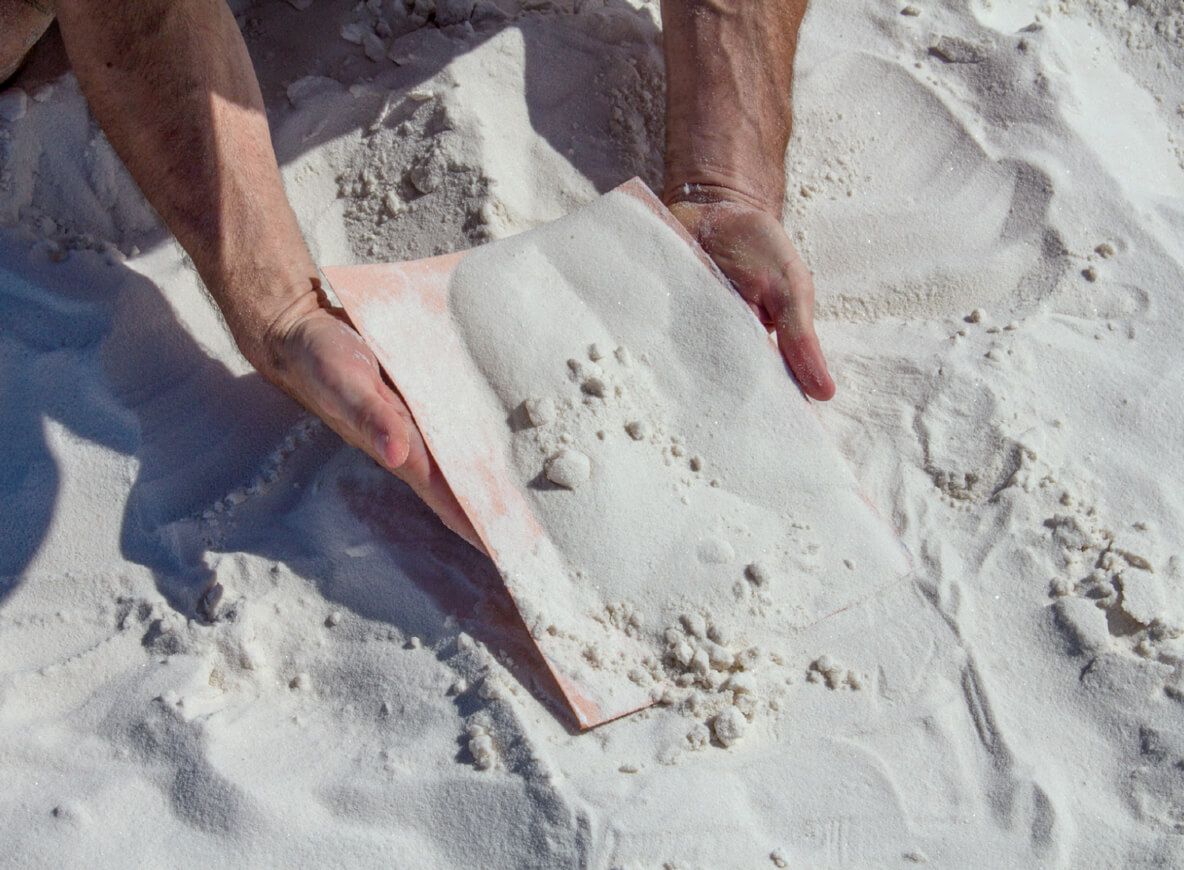Artist Project / Particulate Paper Records of Time
A sand lover’s collection
Chris Domenick

In the opening scene of Michelangelo Antonioni’s 1975 film The Passenger, Jack Nicholson, a well-known journalist making a documentary on Chad’s civil war, is in the Sahara. After a botched shoot, he returns to his hotel room and discovers that the Englishman with whom he had a brief friendship has died. Attempting to escape his marriage, career, and unfulfilled life, he steals the Englishman’s identity and departs into what makes up the rest of the film. Best known for its penultimate scene in a different and yet similarly evocative desert landscape, The Passenger is a beautiful, lush, and desperate excavation of the existential implications of the loss of identity—at least as experienced by an American man wandering around Europe. Just three years earlier, Nicholson had appeared on a different sandy landscape, the beaches of Atlantic City, as the depressive brother of Bruce Dern, a con man with flawed real estate prospects, in The King of Marvin Gardens. In both films, the characters are perpetually on the brink of collapse, aided by, and in collaboration with, the landscape they inhabit. Beaches and deserts, albeit quite different in the social imagination, are linked by their physical makeup. Both are comprised of sand.
Sand is infinite, and miniscule. This is well known by members of the International Sand Collectors Society, who devote their time to sampling, sorting, and classifying their acquired collections. As their microscopy advisor Thomas J. Hopen writes, “A sand sample can be described in terms of grain size, color, composition, morphology (angularity and shape), and surface texture. Grain size is a result of several factors, including composition, durability, severity of weathering conditions, transport distance from its site of origin, and physical sorting by wind and/or water currents.” These arenophiles, or sand lovers, point out that sand is a microcosm of geological transformation over time—a remnant of thousands of years of erosion and of the earth’s perpetual changeability. Sand offers evidence of prehistoric volcanic explosions and points of meteoric impact, as well as traces of military conflict; it tells a prehistorical story and of a recent past. The sand on the beaches of Normandy now contains tiny, corroding fragments of shrapnel as well as glass and iron beads created by the heat from mortar explosions. The Allies’ assault on D-Day is literally inscribed in its earth. Then there are the milk jugs, water bottles, diaper liners, toys, and Tupperware that not only litter our oceans and wash up on its beaches, but also have transformed into microscopic morsels now indistinguishable from the grains of sand we call “natural.” Sand bears witness to the transformation of plastic utensils into coastline.